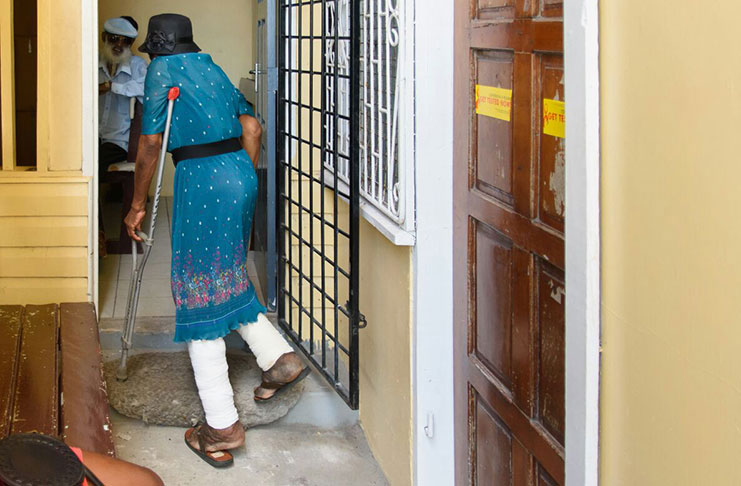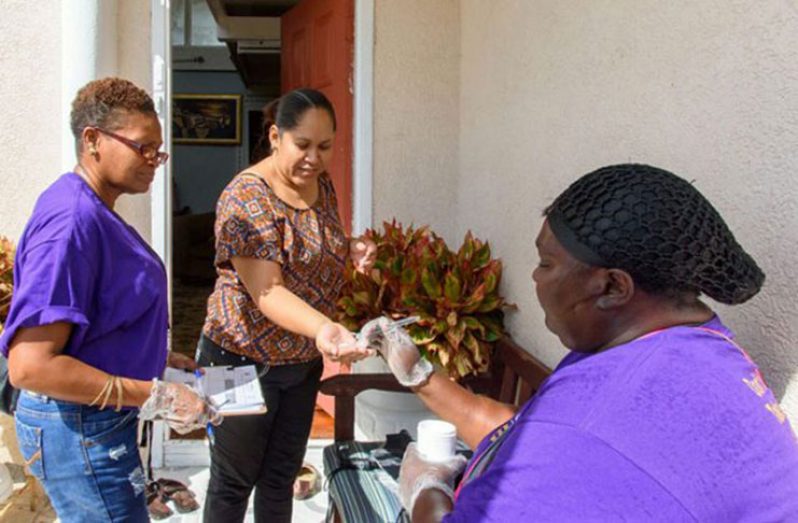If you have been bitten by a Culex mosquito in Guyana, it is quite possible that you may have microfilariae in your blood – the parasites that cause Lymphatic Filariasis commonly known as Filaria, elephantiasis or Big Foot.
As such, health authorities are urging all persons with the exception of pregnant women, children under the age of two and seriously ill persons, to take the preventative pills – Diethylcarbamazine citrate (DEC) and albendazole.
The Pan American Health Organisation (PAHO) recommended tablets eliminate microfilariae from the blood of infected individuals and interrupt transmission of infection by mosquitoes.
Coordinator for the Elimination of Lymphatic Filariasis Campaign, Dr. Fabu Moses said in 2001 close to 10 percent of children (ages 6-13) tested in Guyana had the parasite in their blood. They were tested during a mapping exercise conducted by the Public Health Ministry.
The results showed too that with the exception of Region One, the other regions were endemic to Filaria.
This year, the Vector Control Services Unit, with support from the Public Health Ministry and the Pan American Health Organisation (PAHO), intensified its Mass Drug Administration (MDA) campaign aimed at eliminating Filaria – a disease that damages the lymphatic system, causing abnormal enlargement of body parts. According to WHO, the swelling is oftentimes accompanied by pain, severe disability and social stigma.
Since the start of the unit’s annual Elimination of Lymphatic Filariasis Campaign on October 2, 2017, over 1000 pill distributors and health personnel have been conducting house-to-house distribution of the pills in Regions Three, Four, Five and 10, where the at-risk populations are high. Additionally, the pills are being administered in work places, publicspaces and even in schools with permission from parents

Read More: Gov’t steps up fight against filaria
MIXED REACTIONS
One of the pill distributors, Sunita Szala said while many persons in the Lodge Housing Scheme are responding positively, some have refused the pills. Dr. Moses said some people are objecting because of misconceptions.
She further explained that the tablets are being administered in “campaign mode” because it is important for eligible populations to take them at the same time for five consecutive years.
Thirty-nine-year-old Diane Boyer, who drank the DEC and albendazole tablets on the spot, and collected for her children as well, said she was happy to be afforded the opportunity to eliminate the risk of her immediate family developing Filaria.
D’Urban Backlands resident, 71-year-old Samuel Hytmiah also applauded the initiative.
“I think it is very good, because we are along the coast, we are on flat lands, and drainage is handicap in the city of the dense population, so you would find that there is a lot of accumulation of garbage, stagnant water, and these conditions encourage mosquitoes that would affect citizens. I notice lots of people with filaria, they just take it like that and when it develops, then they see the seriousness of it,” Hytmiah noted.
Over at the Vector Control Services Unit Filaria Clinic, 72- year-old Margret (not her real name) said four years ago when she first experienced the swelling of her left foot she had taken it for granted. The elderly woman said she visited the clinic days later, was tested and the result came back positive.

LESS PAIN
Though walking has become difficult, the elderly woman said the treatment regimen has made the disease less painful.
“I ain’t regret joining the clinic, because the tablets helping me. It helping a great lot because I ain’t in so much pain,” she explained.
While the MDA will conclude on November 5, Dr. Moses said interested persons can visit the nearest health centre or the Filaria Clinic at New Market Street, Georgetown to have the DEC and albendazole tablets administered to them.
The Vector Control Services Unit is hoping to achieve 100 per cent geographical coverage. Guyana currently has a 44 per cent geographical coverage.
GOOD BUT NOT ENOUGH
“So once we have at least 80 per cent of the population free of microfilariae worms then we have a better chance of the entire country being covered. This is when we are at a 100 per cent geographical coverage,” Dr. Moses explained, noting that the 80 per cent does not include the populations that are not targeted.
The MDA using DEC and albendazole form part of a series of campaigns launched in Guyana since the country signed unto the WHO Resolution to eliminate the disease.
In 1997 the World Health Assembly adopted a Resolution calling on member states to initiate steps to eliminate Lymphatic Filariasis as a public health problem by 2020. In response, the WHO launched the Global Programme to Eliminate Lymphatic Filariasis (GPELF) in 2000.
DEC SALT CAMPAIGN
By 2001, Guyana had conducted its mapping exercise and two years later initiated the DEC salt campaign through a MDA in keeping with GPELF but there were challenges with that.
Dr. Moses explained that the Health Ministry was unable to determine the number of persons that was using DEC Salt as against the regular salt.
In 2008 the MDA was altered to include the distribution of the two filaria pills – DEC and albendazole. The campaign has evolved over the years from simply having house-to-house visits, to the administering of the tablets at public places.
Guyana is among four countries in the Americas that are yet to eliminate filaria. The three other countries are Haiti, Brazil and The Dominican Republic.
Statistics coming out of the Ministry indicate that there are approximately 200 recorded cases of Filaria in the country.
In 2016, 20 new patients were admitted to the Filaria Clinic, according to Dr. Moses. This year, during the campaign period, two new admissions were recorded.
According to the WHO, since 2000, a cumulative total of 6.2 billion treatments have been delivered to affected populations, adding that since the establishment of the global programme, 97 million cases of Lymphatic Filariasis have been prevented or cured.




.png)









